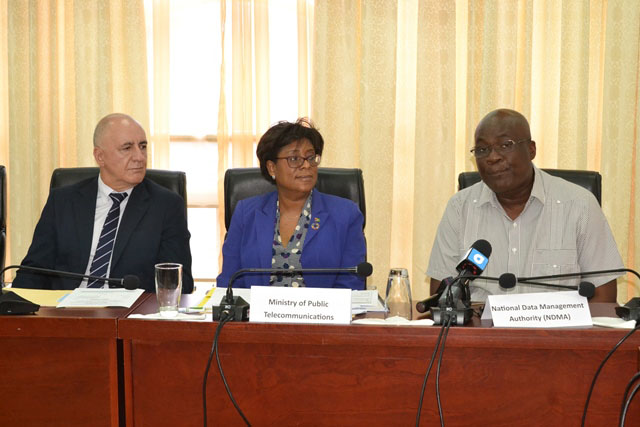By mid-2019, 20 remote communities are expected to be the first beneficiaries of a project that aims to see access to government services through the use of Information and Communications Technology (ICT).
The communities, which are drawn from Region Seven, Region Eight, Region Nine and Region Ten, are expected to serve as the pilot for the US$17 million ICT Access and Eservices for Hinterland, Poor and Remote Communities Project, which is being funded by the Guyana REDD+ Investment Fund (GRIF).
By the end of the project, it is projected that a total of 200 communities will benefit from access.
“…This project focuses on providing government services, citizenship and public security services to residents of communities who are not fortunate to be able to easily access services because of where they live or do not have the means to access these services when we put them online,” Floyd Levi, Chairman of the National Data Management Authority (NDMA), which is executing the project, told a press conference at the Arthur Chung Conference Centre.
Levi disclosed that with the installation of the ICT access hubs in the communities, residents will be able to benefit from eLearning, telemedicine and the processing of applications for biographical documents online, among other things.
“Those applications can be filled out online and submitted to the government agency. The back office is going to look at it, then get it back to the citizen who would have applied for… birth certificates, school entrance, driver licence,” he explained.
He also noted that patients and doctors can engage through video conferencing, which will allow for needed check-ups or consultations.
He explained that companies will be contracted by the ministry to install the necessary equipment and the procurement process has already started.
Also speaking at the press conference, Public Telecommunica-tions Minister Catherine Hughes pointed out that communities targeted under the project have been long neglected in access to ICT.
The communities are Kaikan, Jawalla, Phillipai, Kako, Isseneru, Paruima, Kangaruma and Tasserene in Region Seven; Kurukubaru, Monkey Mountain, Apoteri, Rewa, and Surama in Region Eight; Aranaputa, Toka, Shulinab, Maruranau, and Karaudarnau in Region Nine; and Kimbia and Wiruni in Region Ten.
She noted that the project had been in the making for approximately four years and in 2017 the project document was signed to greenlight it.
“I am excited. Our ICT access in our hinterland and remote community project is really going to transform lives of members of the poor and remote communities,” Hughes said, while noting that it has been recognised that the hinterland has been neglected in terms of access to ICT that can spur development, including online learning and entrepreneurship.
“As soon as these projects are finished the residents can be able to have better access to education and services in Guyana…,” she added
Already, US$680,000 has already been spent on the project for document preparation and needs assessments in the communities.
Project Manager Phillip Walcott, in brief remarks, said that on completion of the installation of the pilot hubs, training sessions and assessments would be conducted before the project enters the next phase.
He was nonetheless confident that his team is up for the challenge since they have already installed 172 ICT community hubs.
Walcott indicated that they have visited the identified communities and consulted with residents before moving ahead.
Asked the cost attached to setting up one of the hubs, Levi explained that they could not put a price to that since the geographic position of a community would determine the cost. “Some areas can be easily assessed over land while some areas it is more difficult to access… It is very difficult to put a fixed cost for the areas we are going install the hubs,” he said.
Hughes said there is close collaboration with the United Nations Development Programme team that is tasked with supervising the implementation of the project.





